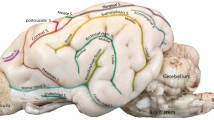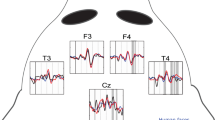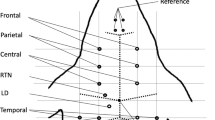Abstract
WHEN a dog brain is isolated from all structures except the skull and perfused with blood from a compatible donor animal, it has properties which make it especially useful for metabolic studies of neural tissue1,2. In all studies conducted with the isolated dog brain, the EEG has been used as a measure of the viability of the isolated and extra-corporeally maintained brain. There remains the question of whether the isolated brain is functioning sufficiently well to respond to normal external stimuli.
This is a preview of subscription content, access via your institution
Access options
Subscribe to this journal
Receive 51 print issues and online access
$199.00 per year
only $3.90 per issue
Buy this article
- Purchase on SpringerLink
- Instant access to full article PDF
Prices may be subject to local taxes which are calculated during checkout
Similar content being viewed by others
References
Gilboe, D. D., Cotanch, W. W., and Glover, M. B., Nature, 206, 94 (1965).
Gilboe, D. D., Glover, M. B., and Cotanch, W. W., Amer. J. Physiol., 213, 11 (1967).
Author information
Authors and Affiliations
Rights and permissions
About this article
Cite this article
BLOMQUIST, A., GILBOE, D. Auditory and Somatic Sensory Responses evoked in the Cerebral Cortex of the Isolated Dog Brain. Nature 227, 409 (1970). https://doi.org/10.1038/227409a0
Received:
Issue date:
DOI: https://doi.org/10.1038/227409a0



